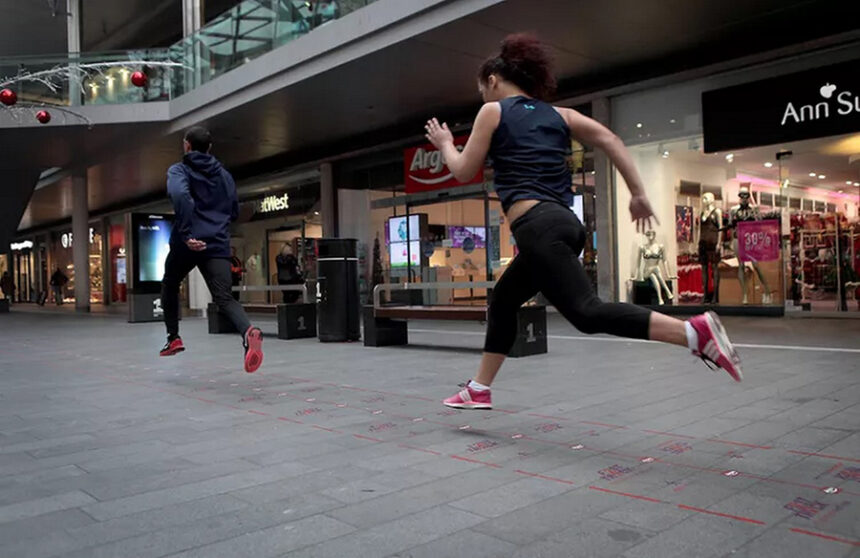Introducing the Pedestrian Fast Lane
Liverpool recently made headlines with its innovative approach to pedestrian traffic management: the city unveiled the United Kingdom’s first-ever “crowd-bypassing pavement lane.” This dedicated lane, designed to accommodate swift-footed pedestrians, aims to alleviate frustrations commonly associated with navigating crowded sidewalks. While initially a temporary installation, the fast lane has sparked discussions about the future of urban pedestrian infrastructure.
Origins and Purpose: A Retailer’s PR Stunt
Contrary to popular belief, the pedestrian fast lane was not an official initiative proposed by Liverpool officials. Instead, it was a clever public relations stunt orchestrated by Argos, a British retailer. The primary objective behind the “Fast Track” lane was to guide hurried shoppers seamlessly into Argos stores, minimizing frustration caused by slow-moving pedestrians. This unconventional approach to managing foot traffic reflects a growing awareness of pedestrian needs in urban environments.
Addressing Common Pedestrian Grievances
The decision to implement a fast lane stemmed from a survey conducted by Argos, which identified common frustrations among shoppers. “Sidewalk hoggers” and “dawdling pedestrians” ranked among the top grievances, underscoring the need for solutions to sidewalk congestion. By offering a designated lane for swift walkers, Argos sought to enhance the shopping experience and alleviate pedestrian frustrations.
Public Reception and Future Considerations
Initial reactions to the pedestrian fast lane were mixed, with younger demographics expressing greater enthusiasm for the concept. While the temporary nature of the installation limits its long-term impact, it has sparked conversations about pedestrian-friendly urban design. As cities grapple with increasing pedestrian volumes, innovative solutions like fast lanes may become more commonplace.
Beyond Liverpool: Exploring Global Trends
Liverpool’s pedestrian fast lane is not the first of its kind globally. Similar initiatives, such as designated lanes for slow walkers in Chongqing, China, have been introduced to address pedestrian congestion. The success of these initiatives underscores the importance of tailored solutions to urban pedestrian challenges.
Future Implications and Considerations
As the fast lane experiment draws to a close, questions remain about its lasting impact. Will Liverpool officials explore permanent solutions to sidewalk congestion? How will retailers like Argos leverage insights from the fast lane trial to enhance the shopping experience? The evolving landscape of urban pedestrian infrastructure highlights the need for adaptable and innovative solutions to meet the needs of diverse city dwellers.
Conclusion: Paving the Way for Pedestrian-Friendly Cities
Liverpool’s pedestrian fast lane serves as a reminder of the importance of prioritizing pedestrian needs in urban planning. While temporary in nature, the initiative has sparked meaningful conversations about pedestrian infrastructure and congestion management. As cities continue to evolve, innovative solutions like fast lanes offer promising opportunities to create more pedestrian-friendly environments for all.



Leave a Reply